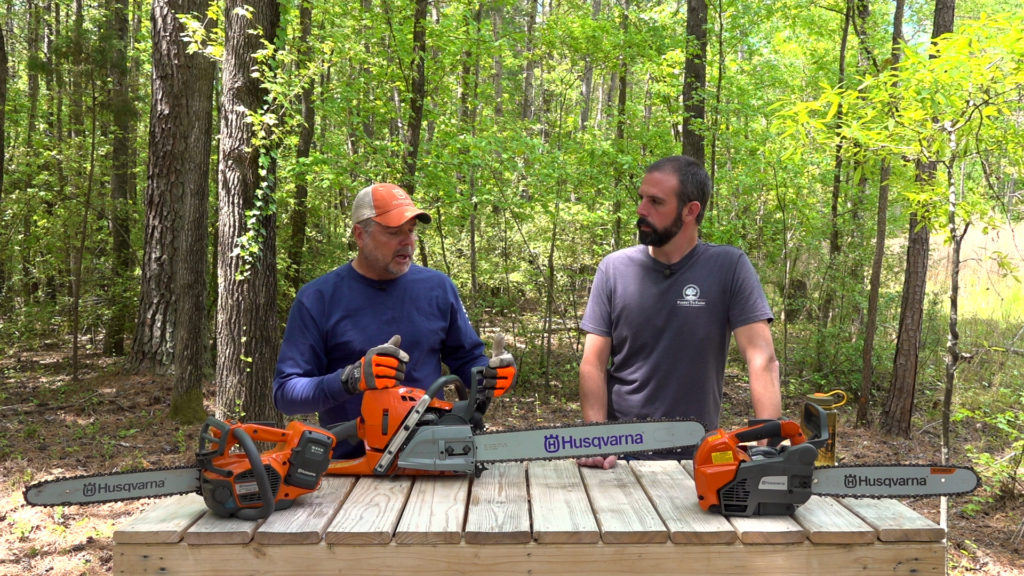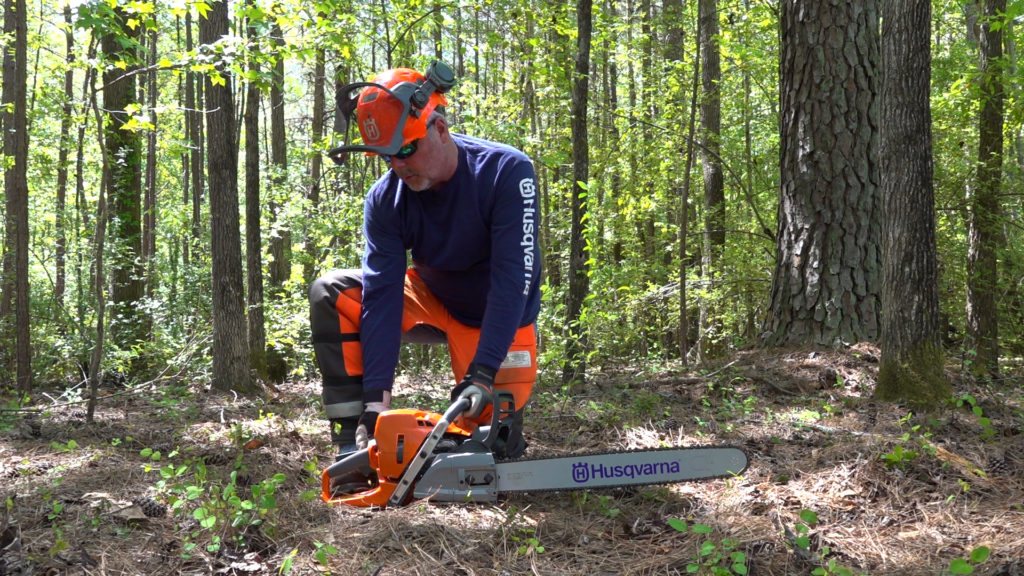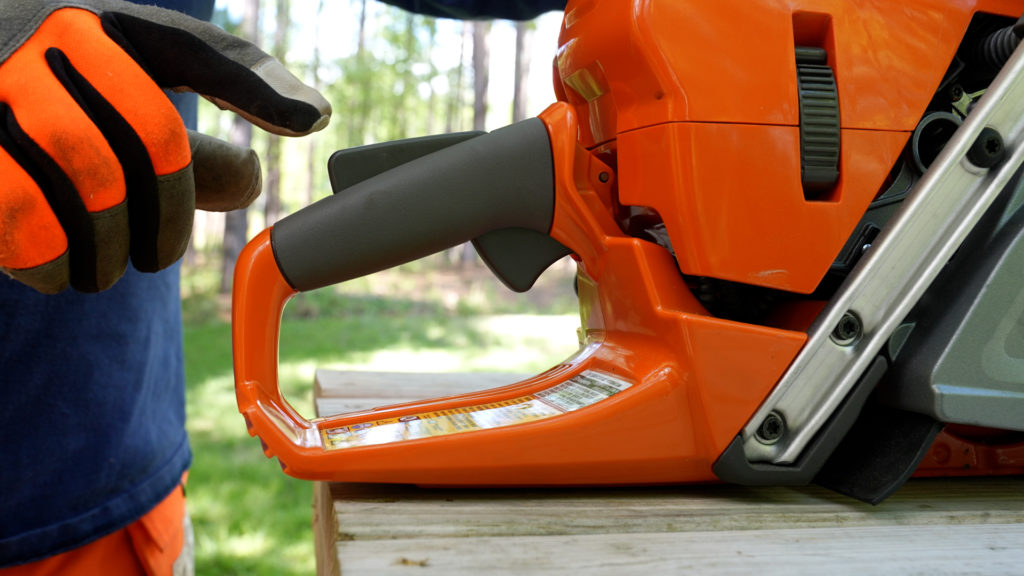
Welcome back guys! Brian & Terry here with The Forest to Farm Project. We are back with our fifth installment in the 7-part series on PPE with Scott from Husqvarna, and today we’ll be discussing the different safety features built into these chainsaws.

The Expert:
- Name: Scott Martin
- Profession: Husqvarna Training & Sales Knowledge
- Time on The Job: 25 Years
When it comes to the safety aspects that are built into a chainsaw, there are five main areas we focus on.
The five main areas are:
- Chain Brake
- Inertial-Activated Chain Brake
- Built-up Rear Handle
- Chain Catcher
- Throttle Interlock
First, let’s look at the chain brake. Pretty much everyone knows about a chain brake. It’s a very simple feature, much like an emergency brake on a car, it stops the chain from spinning. In the event of a kickback, if you are holding the saw in proper form, with your left hand fully wrapped on top of the handle, as the saw rotates backwards towards you your hand will engage the chain brake and activate it, which should bring the chain to an immediate stop.
Several years ago, Husqvarna developed the Inertia-activated chain brake. It’s in use in pretty much all saws now so they have 2 methods of braking. With the inertia-activated method there is a weighted mechanism that is located inside the side cover on the chainsaw. In the event that you have a really sharp or violent kickback, the weighted mechanism kicks in. When it kicks in, it should engage the chain brake immediately and stop the chain. This system really comes into play when you are holding the saw in a non-standard method, such as an angled cut or felling scenario. In those situations, your hand may not be at the optimal position on the handle to engage the chain brake in the event of a rotational kickback. In that type of event, with a sharp reactionary force, they inertia-activated system should take over and stop the chain before it comes into contact with anyone.

If you look at the bottom of the saw, you’ll find another safety feature built into the saw. This is the built-up grip area. It’s built up on the right side of the handle. It’s formed in this design because the saw is built to be used in a right-handed fashion, with your right hand on the grip. So, imagine this grip wasn’t built up. You would instead have a narrow grip/handle area, that would, in the event of a chain derailment, be a direct line of penetration to your right hand, knuckles, and fingers. The reason this comes into play is, if the chain came off the bar, the reactionary force would be for the saw chain to hunt for the drive sprocket. In that case, especially with a long bar, the chain would tend to whip back and impact that built up area of the grip.
The next safety feature, also located on the bottom of the saw, would be the chain catcher. The chain catcher is exactly what it says, a chain catcher. In the event of a derailment of the chain from the bar, the chain wants to find that drive sprocket that’s pushing it, so as it hunts backwards, the chain catcher should grab the chain and knot it up when it makes contact with it. Now, if and when that happens to your saw, you may experience some damage to the chain catcher. Husqvarna saws are designed so that these chain catchers can be easily replaced. So, if you pick up a saw that has a damaged or missing chain catcher, it should be considered inoperable until that chain catcher is replaced. Without it, or with it damaged, you’re not utilizing all of the safety aspects to their fullest extent.
The last main safety feature you’ll find, at the back of the saw, would be the throttle interlock. This interlock prevents the saw from being throttled up without a proper full grip on the handle. This is very beneficial, for instance, if you’re walking through the woods with the saw running and you stumble and fall. Something could come into contact with the trigger and engage it, making the saw run. However, with the throttle interlock, chances of this happening are greatly reduced. You never want to bypass this interlock because it can make for some very dangerous situations.
Another feature built into these saws is the fact that they all have metal springs. These springs greatly aid in vibration reduction which helps make it a more enjoyable experience running the saw for longer periods of time. You’ll experience less fatigue, making your sawing more efficient. Additionally, less fatigue should mean less accidents.
One other thing to consider is bar selection. The bigger the tip of a bar is, the larger the kickback zone would be. We’ll get more into reactive forces and kickback in our next installment in the series.
It really pays to know the features built into your saw. If you don’t know the features available, you can’t take full advantage of what is offered, or use it to its fullest extent. Additionally, if you don’t know how the safety features are supposed to work, you won’t know when they aren’t operating properly. So, take the time to learn the ins and outs of the equipment you’re using.
We hope you found this part of the PPE series informative and helpful when it comes to knowing some of the built-in safety features of your saw. Check back soon for the next installment in our chainsaw safety PPE series!
